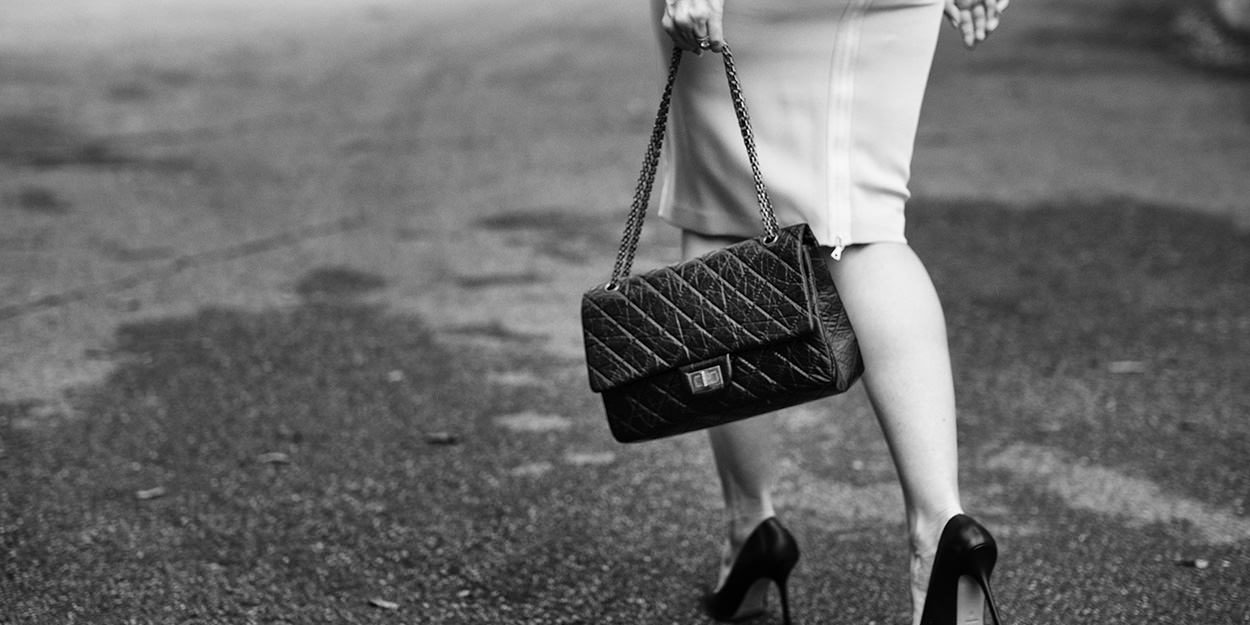Handbags sit at the heart of the business of fashion, accounting for about 90% of total revenue at some brands. Why?
In a recent post (http://www.ethicsoffashion.com/fashion-marketing-unconscious/) I discussed a Jungian marketing strategy proposed by the dean of the Italian fashion school Polimoda, Danilo Venturi. Venturi argues that the unconscious is populated by archetypes and a successful business will target these archetypes to emblazon their products on the unconscious. It is interesting but I wonder whether it is actually true. Lacan would say not.
Let’s look at how Lacan might explain handbags as a mapping of the unconscious.
Like Hume (V&R Chapter 1), Lacan proposes that ornamentation is basic to human existence. Persons begin in what Lacan terms subornation (Ecrits [Norton edition], p. 709). Persons, argues Lacan, are constellations of meanings (what he calls signifiers). In Seminar 7 he uses the image of fabric to get at the idea: my identity stems from an interweaving of relationships, or a web of meanings. These meanings (or signifiers) make up a veritable host: family, mores, games, social media, rites and rituals, establishment, and on and on. My person is constituted by these decorative meanings (subornation).
Subornation is twofold. There is an opening, i.e. the person comes to the attention of self and others. There is a closing also: for the very meaning that makes the person first appear, open on the stage, so to say, is also a closing; for that meaning can only be understood in relationship to other meanings. No meaning is meaningful is isolation. There is, therefore, a fading of the person amidst the host of meanings: “he is in being but the Other’s desire” (p. 709). This is the unconscious.
In Lacan, the unconscious is not a dank, weed-strewn, reservoir of lusts but the person in the grip of a constantly changing and sweeping interplay of signifiers (meanings interlocking and feeding off one another in metonymy and metaphor). The person fades before the unconscious because marginalized by the unstoppable play of the signifiers she is captured by: ideas, ideals, values, symbols, rites, ricocheting off one another.
Handbags open and close. Handbags are the heart of the business of fashion because subornation is an opening and closing — the birth of persons to awareness of self and others and their being put in their place in the unconscious.
Subornation is the core of personal identity, conscious and unconscious, but that is not all. If you put stress on the sub in subornation you arrive at what Lacan calls the chain of signification: the person submits to the web of meanings without which the person cannot even begin to affirm herself. Jouissance is what Lacan calls the struggle to break that chain. Crucially, the chain must not be broken for it is our identity: we struggle against it, however, because our identity is bewildering and fraught, the web of meanings splits and alienates our identity (http://www.ethicsoffashion.com/jacques-lacan-beauty-aint-pretty/).
Lacan also thinks this web of relationships usefully explained by combinatorial geometry. Combinatorial geometry is the mapping of packing, padding, covering, coloring, folding, symmetry, tiling, and partitioning (http://mathworld.wolfram.com/CombinatorialGeometry.html) (https://www.encyclopediaofmath.org//index.php?title=Combinatorial_geometry&oldid=11817). This is what happens to our identity addressed by the unconscious: we fill out, have shape and take on substance, because we are lent clothes by the unconscious (p. 693).
Put all this together: a bag that opens and closes, has a chain, padding, partitioning, and symmetry, and you get an iconic bag. Iconic because mapping the unconscious:
![]()






